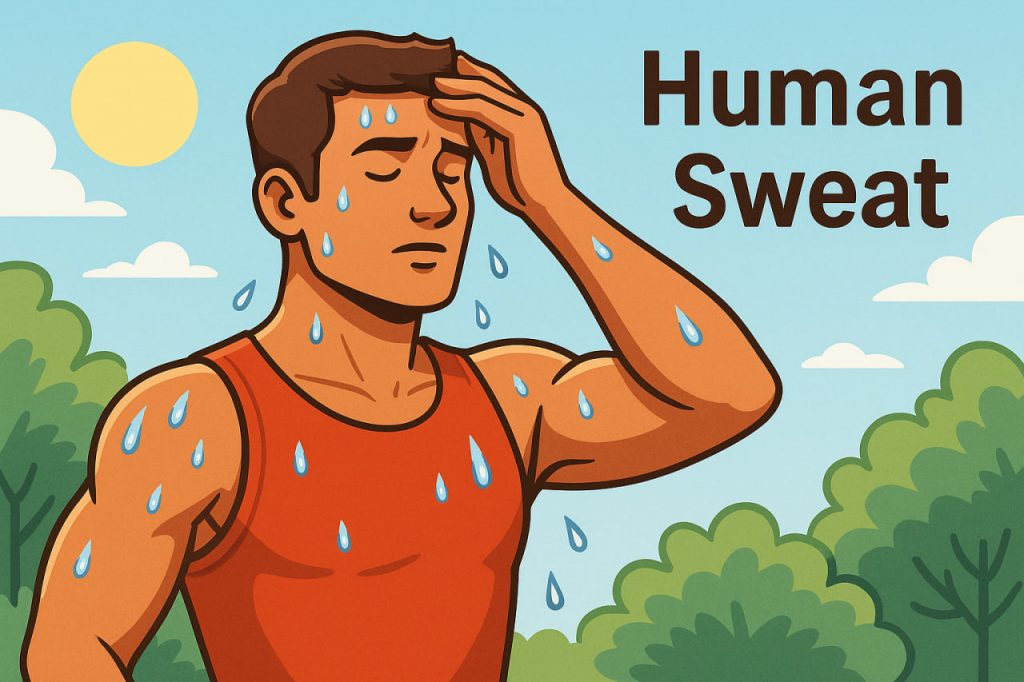Human sweat is often thought of simply as a sign of heat or physical exertion, but it is actually a highly sophisticated biological function. Sweat helps regulate body temperature, remove waste products, and can even send subtle chemical signals to other people. Far from being just “water,” sweat contains salts, proteins, hormones, and scent molecules that reflect our physical and emotional condition. Understanding how sweat works reveals how deeply it is connected to health, emotion, and survival.
The Purpose of Sweating
Sweating is the body’s natural cooling system. When the temperature of the body rises—whether from exercise, stress, or a warm environment—the brain activates sweat glands. As sweat evaporates from the skin, it cools the body and keeps internal temperature within a safe and stable range. Without sweating, the body could overheat quickly, leading to dangerous conditions such as heatstroke. This mechanism is one of the reasons humans can perform long physical activities, such as running, better than many animals.
Types of Sweat Glands
The human body contains two main types of sweat glands:
- Eccrine glands — Found all over the body, these produce light, watery sweat used for cooling.
- Apocrine glands — Located mostly in the armpits and groin, these produce thicker sweat that contains proteins and fats.
The sweat from apocrine glands interacts with natural skin bacteria, producing body odor. This odor varies from person to person due to genetics, diet, stress, and hygiene habits. Dermatologist Dr. Olivia Hart explains, “Body odor is not just about sweat itself—it’s about how sweat interacts with the ecosystem of bacteria living on the skin.”
Sweat and Emotional Communication
Sweat can also respond to emotions, which is why people sweat more when nervous, excited, or afraid. This is caused by the release of stress hormones like adrenaline. Research suggests that emotional sweat carries chemical signals called chemosignals, which other people can subconsciously detect. These signals can influence how others perceive our mood, even if no words are spoken. In this sense, sweat is a subtle form of nonverbal communication shared by all humans.
Sweat and Health
Sweating can help the body eliminate small amounts of waste products, such as salts and certain metabolic byproducts. However, excessive sweating, or hyperhidrosis, can sometimes indicate hormonal imbalance, stress, or other health conditions. Dehydration is also a risk when sweat loss is high, especially during physical activity. Maintaining hydration and replacing minerals is important for healthy sweating. If someone experiences sudden or extreme changes in sweating patterns, it is best to consult a specialist.
Cultural Perceptions of Sweat
Different cultures view sweat in different ways. Some see sweating as cleansing and healthy, such as in sauna traditions in Finland or steam bath practices in Turkey. In sports and fitness culture, sweat is often seen as a sign of effort and discipline. At the same time, modern society sometimes encourages hiding or controlling sweat to maintain social comfort. The balance between hygiene and natural function is a personal and cultural decision.
Interesting Facts
- The average person has 2 to 5 million sweat glands.
- Sweat itself does not smell—odor comes from bacteria breaking it down.
- Humans are among the few mammals that cool primarily by sweating.
- Stress sweat is chemically different from heat-induced sweat.
- Sweating can increase during strong emotions, not just physical exertion.
Glossary
- Eccrine glands — Sweat glands that produce light sweat to cool the body.
- Apocrine glands — Sweat glands that produce thicker sweat linked to body odor.
- Chemosignals — Chemical signals that transmit emotional or biological information.
- Hyperhidrosis — A condition involving excessive sweating.
- Evaporation — The process by which liquid turns into vapor, cooling the surface.


